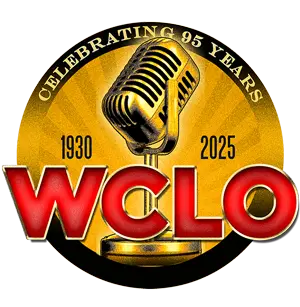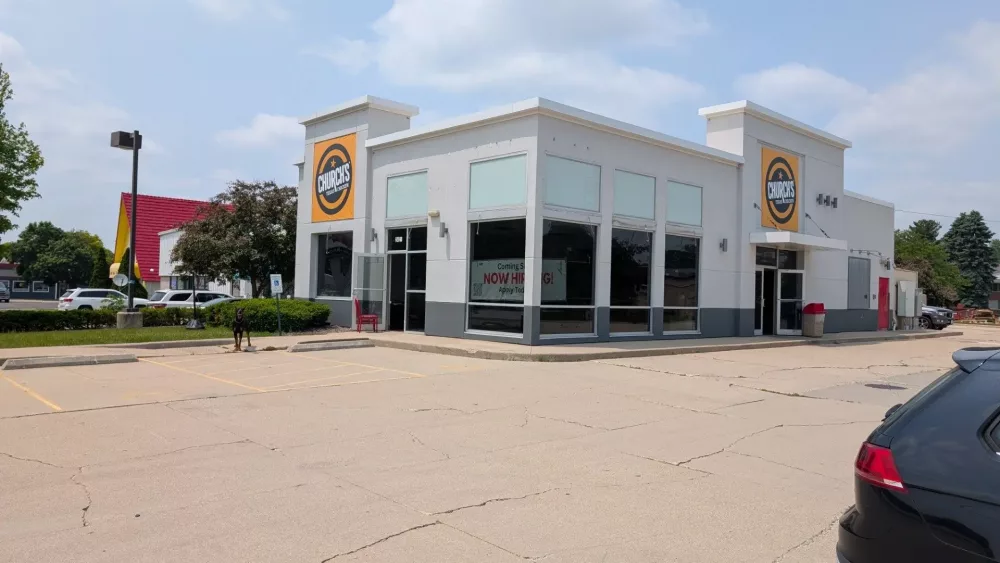| By Neil Johnson, reporter/anchor, Big Radio |
It’ll likely be years before the city of Janesville sees the true fruits of the labor it’d undertake if the city council decides Monday to condemn and buy out the former General Motors plant site on the south side.
First, great swaths of the 250-acre site, used for auto assembly for nearly 100 years, would need a dramatic environmental cleanup.
City officials say the blighted site, which has seen little movement for nearly four years, is more than a quarter-million dollars arrears in taxes and utility fees.
Its owner, the blandly named St. Louis property-holding group Commercial Development Company, has left piles of rubble, plus acres of asphalt and concrete footings, laying across huge swaths of the north half of the property for years.
And underneath that mess of leftover blight, as the state Department of Natural Resources, the current owner, and the city of Janesville all know, is environmental soil contamination.
City Manager Kevin Lahner says the contamination is “significant,” the ground below the former auto plant riddled with it “like Swiss cheese.”
Though now bare of all its original, 2.5 million-square-foot vehicle assembly complex, the GM site is a long way from habitable for any future industrial user.
Or, at least, it will remain unfeasible for development without untold spending to root out and remove soil contamination city officials say came from years of petrochemicals leaching into the ground during GM’s plant operations.
That cost, whatever it may be, would now fall on the city’s shoulders.
Lahner says the city doesn’t want to speculate on such costs without having ownership of the land and a more up-to-date complete stock of its environmental status. However, the city has spent months working the DNR and a private consultant, Ehlers, which Kuborn says it likely would retain for consulting on any environmental cleanup.
That’s given City Hall enough stock of the current liabilities below the soil that Lahner says the city knows there is no ground water contamination or chemical vapor contamination on either the 115-acre main plant site or the 115-acre former JATCO haul-away yard to the south.
New Plans
The city now is seeking the council’s blessing to spend an undisclosed amount of money on a bid that might require a court decision to buy out the old Chevrolet and GM truck-building, which has sat empty and blighted for the last half-decade.
Rolled in with that cost would be remediation costs Lahner said likely would be spread over time with the work being done “pragmatically.”
Lahner, and city Economic Development Director Jimsi Kuborn, said the city buying the property would hit a re-set button on plans to see the old GM site rise again with new development, although that could remain years off.
The city’s main goal would be to eventually sell the property for redevelopment, probably a mix of industry and commercial use, although some officials have speculated parts of the property could support new housing.
Officials have said it’s unlikely the site would be redeveloped in massive chunks.
It’s more likely that it would be built out over time with smaller or midsize development. First, though, the council would have to OK the condemnation and the city’s buyout of the site. And the buyout and its possible legal machinations would roll out over the bulk of this year.
“It’s not a point of no return because ultimately the city council could determine not to move forward with the condemnation,” Lahner says.
But Lahner says he doesn’t believe it’s realistic for the city to retrench and wait for Commercial Development to someday rekindle plans to vault the GM site into reuse. Things have changed since 2018, when the company trumpeted the former auto plant property as the future “Centennial Business Park.”
Shedding Old Promises
Commercial Development after demoing the GM factory buildings prior to 2020, has tried twice in the last few years to sell the cleared properties at auction, but the sales apparently fell apart during a cooling-off period.
Lahner says city staff believes it’s now time to turn to a new concept for the property—one of local control.
“We feel from a staff perspective that they (Commercial Development) have been given enough opportunity,” Lahner said.
“What we have communicated with them and what we’ve been doing for many years is working with them trying to encourage development on the sites,” he said.
“We’ve communicated their violations of city ordinances multiple times; we have communicated the fact that they haven’t paid their taxes or utility fees multiple times. Up to this point, we’ve worked with them as a partner in an attempt to address the property, and there just hasn’t been progress there.”
The city’s first moves as owners, Lahner says, would require skinning off acres of concrete factory floor and asphalt lots on the main GM plant property – some underneath large piles of rubble.
It’s material Commercial Development Company has avoided disturbing because the state Department of Natural Resources in an environmental closure letter says the material acts as a “cap” over cells of known ground-soil contamination.
If the city does buy the property—either through an agreed condemnation sale by Commercial Development, or through a court action that sets a base price—the city intends to remove the debris, concrete and asphalt on site, in keeping with its own demolition ordinances.
Then it’d be on to cleanup of whatever is underneath, in the soil.
“It’s essentially a Swiss cheese of contamination (beneath),” Lahner says. “We will take active steps to remove the asphalt (and concrete), and then deal with the contamination. That’s going to be our primary responsibility.”
The city’s demolition rules are ones Commercial Development Company has flouted, saying at one time it liked the idea of leaving big swaths of concrete in place as a ready made “base” that new developments could be built on.
That discourse came during a period when Commercial Development was trumpeting plans to bring in mid-scale intermodal and grain-shipping activities to the huge site, which for decades has had heavy, multi-track rail infrastructure built in.
In 2022, Commercial Development hosted a junket on the south side to ballyhoo a possible intermodal switchyard at the JATCO site. That was the last major overture Commercial Development gave the city before relations, and tax payments, apparently went cold.
Kuborn and Lahner now tell reporters this week that that whether or not Commercial Development held onto the property–which, under condemnation, it would not—the city considers the owner’s earlier, intermodal plan dead, at least for now.
“That is something that at this time is not moving forward,” Kuborn said.
Lahner said he “evaluated that proposal,” but it “wasn’t a good use for that site.”
“In my research of multi-modal sites, I don’t think it would add significant value to the city in terms of what it would bring in trains and trucks,” Lahner said.
The Future Takes a While
Kuborn and Lahner both say they’re confident that some economic development prospects on the south side will begin to heat up under the city’s possible grab-hold of the GM property—even if it’s years before most of the GM site is considered “shovel ready” for development.
The city previously designated the GM site as part of a new tax-increment financing district, which would allow for loans to redevelop the area that could then be repaid by new tax value that came from improvements within the taxing district.
Kuborn says she’s already working on two new development deals near the GM site.
The city also could garner grants and other incentives from the state or federal governments that could offset costs of environmental cleanup necessary to bring the GM site ready for multi-use redevelopment, Kuborn said.
Lahner says part of the city talking over the GM site requires it to relocate any ancillary businesses that would be displaced under the city’s buyout. He says that would include a tavern that still operates along the east side of the old GM plant property, two decades after the plant ceased operations.
The neighborhood and the city as a whole would begin to see positive change through cleanup, Lahner says. He says the city would want to clear and clean up the property systematically rather than in phases while trying to sell off cleaned-up parts off piecemeal.
Lahner cautions that residents should not expect to see the old GM site transformed immediately.
“We’d address the rubble, the asphalt, the cement, and everything else that’s wrong with the property…and that will eliminate the public health concern. That’s something everybody can be happy about,” Lahner said. “But I want people to know it’s going to take some time. It’s not tomorrow.”












